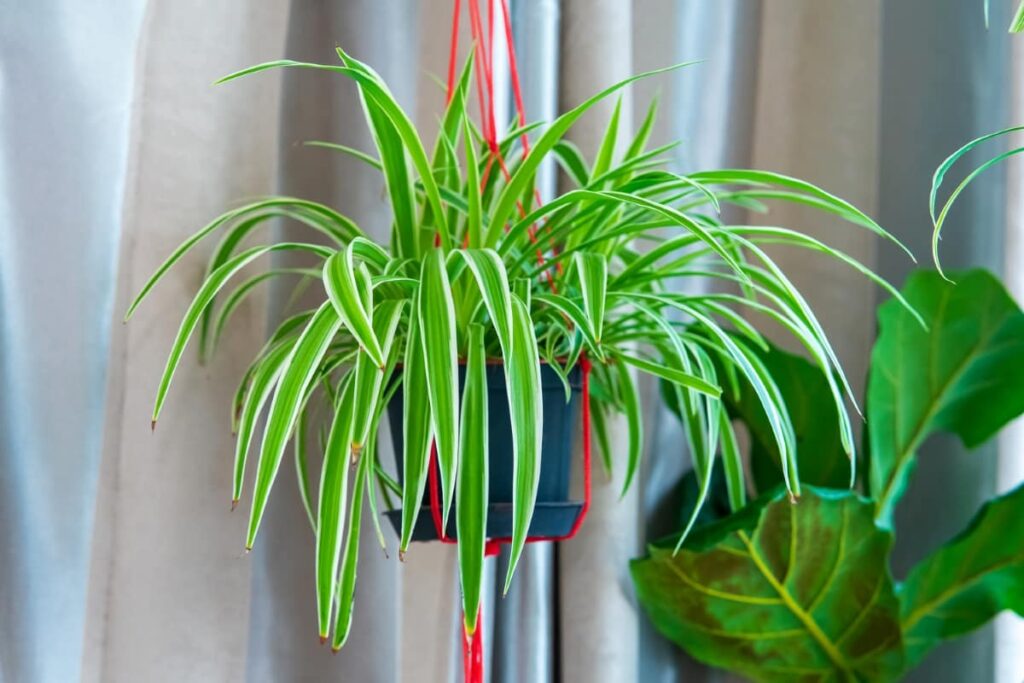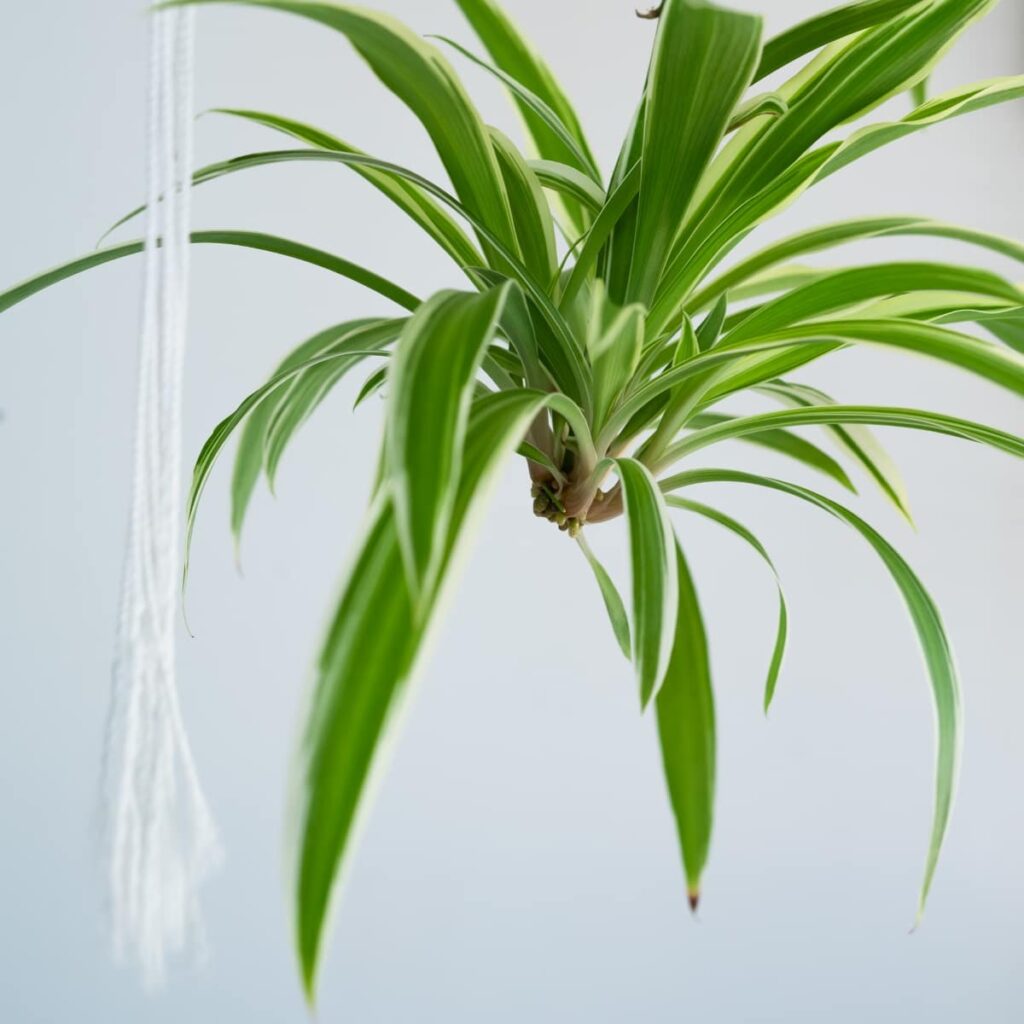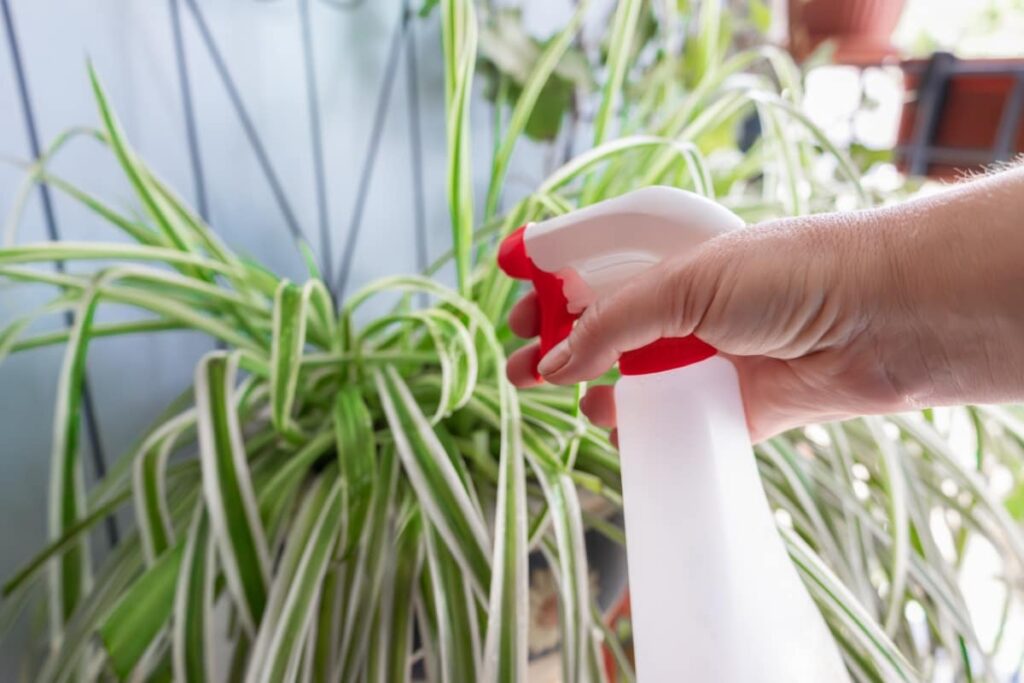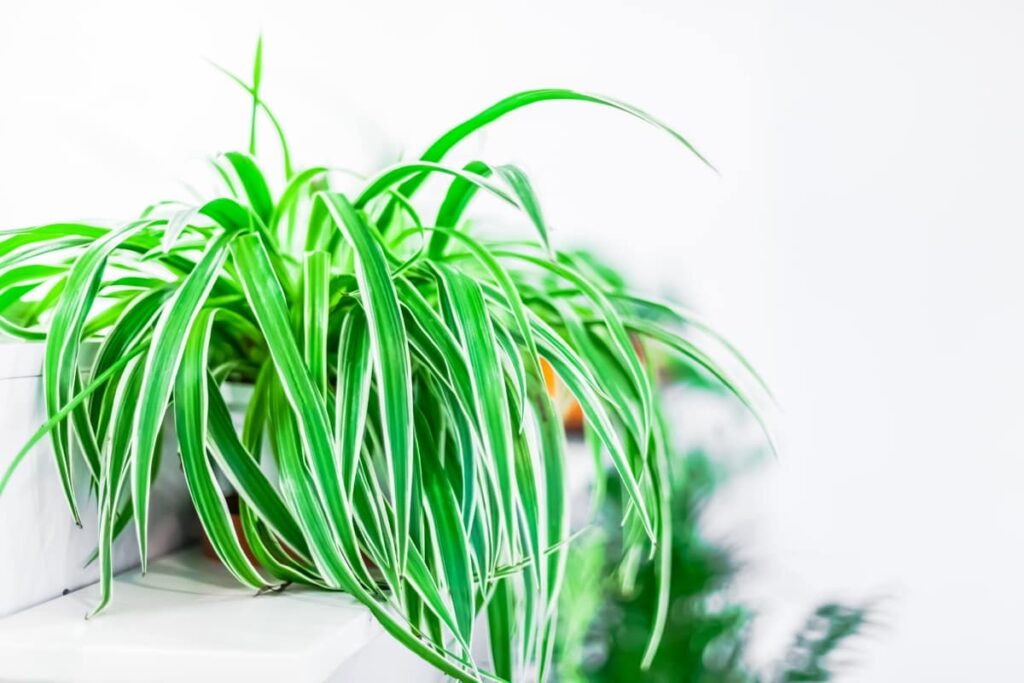Spider plant, commonly known as the Chlorophytum comosum, is an African native that has found its way into homes all around the world. Belonging to the asparagus family, Spider plants are beautiful additions to any indoor space, but sometimes, they can encounter leaf-related problems that may leave plant owners facing. Fortunately, there are natural and organic remedies that can help fix these issues and keep your Spider plant healthy and beautiful.

How to Fix Spider Plant Leaf-Related Problems
Brown Leaf Tips
It is a common issue that can be easily fixed with some care and attention. Brown leaf tips are usually a sign of underwatering or low humidity levels. To prevent this problem, make sure to water your Spider plant regularly but not excessively. Another possible cause of brown leaf tips could be the build-up of salts in the soil from fertilizers. Try flushing the soil occasionally with distilled water to remove any accumulated salts. Additionally, consider placing a humidifier near your plant or misting its leaves occasionally to increase humidity levels.
Leaves Turning Yellow
Yellowing plant leaves are a sign of overwatering or poor drainage. Ensure that your plant is not sitting in water and adjust your watering accordingly. Another cause of yellowing leaves could be inadequate light levels. Spider plants thrive in indirect sunlight, so make sure they are getting enough natural light throughout the day. Consider moving them to a brighter spot if needed. Nutrient deficiencies can also lead to yellow leaves. Try fertilizing your Spider plant with a balanced organic fertilizer to provide it with the necessary nutrients for healthy growth.
White Spots on Leaves
White spots on leaves may indicate the presence of pests like Spider mites, which feed on the plant’s sap and leave behind telltale marks. To combat these unwelcome guests, try gently wiping down the affected areas with a mixture of water and mild soap to remove them. Alternatively, white spots could also be caused by fungal infections such as powdery mildew.
In case you missed it: Ultimate Guide to Yellow Raspberries: Exploring from Planting to Care

To address this problem, ensure proper air circulation around your plant and avoid overwatering to prevent moisture build-up that promotes fungal growth. Regularly inspecting your Spider plant for any signs of white spots and addressing them promptly can help keep it healthy and thriving.
Drooping Leaves
The main reason for drooping leaves could be overwatering. Make sure you’re allowing the soil to dry out between waterings to prevent root rot, which can lead to limp foliage. Another possible cause could be insufficient light. Spider plants thrive in bright, indirect sunlight. If they’re not getting enough light, they may start to droop as a result.
Check the humidity levels in your plant’s environment as well. Extreme temperatures or low humidity can stress out your Spider plant and cause its leaves to droop. Consider giving your Spider plant a gentle shower or wiping down its leaves with a damp cloth to remove any dust build-up that could be blocking sunlight absorption.
Leaves Turning Brown
Brown leaves on your Spider plant may indicate various factors at play. The possible reason for leaves turning brown is overwatering. Spider plants prefer moist soil but can suffer if they are watered too frequently. Make sure proper drainage in the pot to prevent waterlogged roots. Another cause could be underwatering.
Spider plants require consistent watering to thrive, so make sure you are providing enough moisture without saturating the soil. Environmental stressors such as direct sunlight or drafts can also lead to browning leaves. Consider moving your Spider plant to a more suitable location where it can receive consistent temperatures.
Leaves Curling
Leaves curling could indicate overwatering or underwatering, so it’s important to know the soil moisture level regularly. Ensure your Spider plant is receiving adequate sunlight but not direct harsh light that may cause stress and lead to curling leaves.
Proper drainage is crucial to prevent waterlogged roots, which can also contribute to leaf curling. Consider repotting your Spider plant if you suspect root-bound conditions are causing stress. Pests can also cause leaves to curl as they sap nutrients from the plant. Regularly inspect the undersides of leaves for any signs of infestation and treat accordingly with natural remedies like insecticidal soap.
Limp and Droopy Plant
A limp and droopy plant is often a sign of overwatering or underwatering. The roots may be struggling to absorb water properly, causing the leaves to wilt. To help revive your plant, start by checking the soil moisture level. Stick your finger into the growing soil; if it feels dry, it’s time to water. Trim any yellow or brown leaves to encourage new growth and promote airflow around the plant.
In case you missed it: Ultimate Guide to Growing Red Creeping Thyme: Propagation, Planting, Pruning, and Care

Scorched Leaves
If you notice your Spider plant’s leaves looking scorched, it may be due to excessive exposure to direct sunlight. Spider plants prefer indirect light and can get sunburned if placed in a spot with too much intense sunlight. To fix this issue, move your plant to a location where it receives indirect light.
Scorched leaves may also result from high temperatures or dry air. Make sure your Spider plant is not placed near heating vents or radiators that could cause the leaves to burn. Keep the humidity levels stable by misting the air around your plant regularly or placing a humidifier nearby. Water your Spider plant appropriately, ensuring the soil remains consistently moist but not waterlogged.
Faded or Bleached Leaves
Bleached leaves can be a sign of too much direct sunlight. Spider plants prefer bright, indirect light rather than harsh rays. If you notice this issue, consider moving your plant to a spot with gentler lighting. Faded or bleached leaves may also indicate that your Spider plant is getting too much fertilizer. Check the feeding schedule and adjust accordingly. Remember, less is often more when it comes to fertilizing indoor plants.
Another common culprit for faded or bleached leaves is water quality. Make sure you are using filtered or distilled water to avoid mineral build-up in the soil, which can affect leaf color. Inspect your watering routine as well – overwatering can lead to nutrient deficiencies that manifest as fading or bleaching of the leaves. Stick to a consistent watering schedule and allow the soil to dry out for optimal plant health.
No New Growth of Leaves
By understanding the symptoms, you can take proactive measures to address them naturally and organically. If you notice that your Spider plant is not producing new leaves, it may be due to issues such as inadequate light exposure, improper watering, or nutrient deficiencies. To encourage new growth, ensure your plant receives sufficient indirect sunlight, water it appropriately by allowing the soil to dry out, and consider using a balanced organic fertilizer.
In case you missed it: Top 10 Common Peacock Plant Problems and How to Fix Them

Remember that each Spider plant is unique in its needs and preferences. By observing your plant closely and responding promptly to any leaf-related problems that arise, you can help ensure its health and vitality for years to come.
Conclusion
Spider plants are beautiful additions to any garden, with their long, arching leaves adding a touch of greenery to your space. Its ability to thrive in various conditions makes it a popular choice for both novice and experienced plant enthusiasts alike. It’s important to understand the common issues that Spider plants face to provide them with the care they need to thrive. There are some natural and organic remedies to fix common leaf-related problems.
- Irrigation and Water Management in Pineapple Farming
- Blossom to Harvest: Mastering Flowering and Pollination in Papaya Farming
- Pig Fattening Essentials: From Selection to Sale for Beginners
- Raising Wagyu Cattle: A Complete Guide for Premium Beef Production
- Soil Types and Their Water Holding Capacity
- Optimizing Irrigation Schedules for Coconut Groves for Enhanced Yield
- Espresso Your Garden: Coffee Grounds for Healthier Acid-Loving Plants
- The Best Soil Mix for Snake Plants: How to Mix Your Own Snake Plant Soil
- Green Thumb Success: Expert Tips for Cultivating Greenhouse Beans All Year Round
